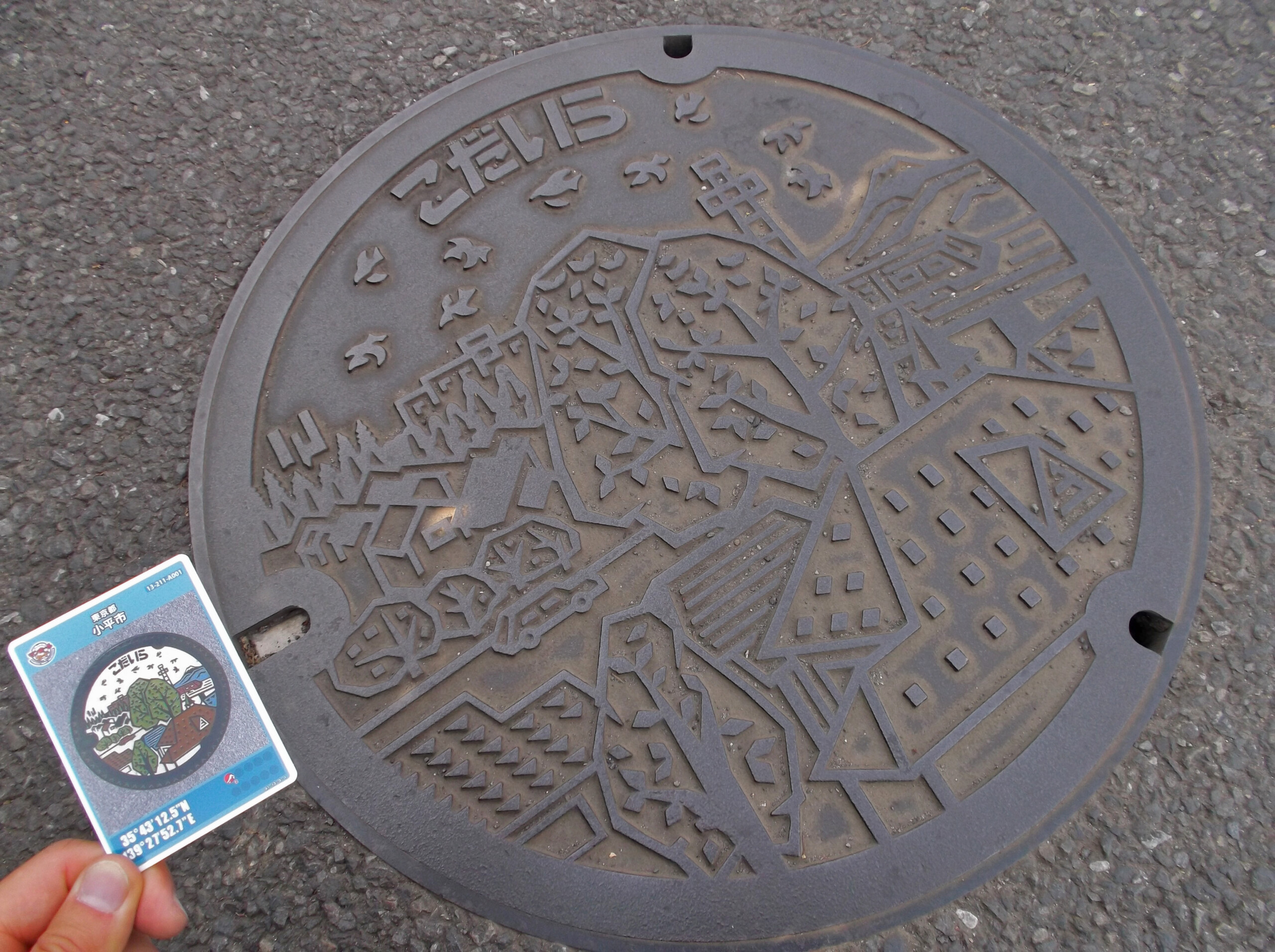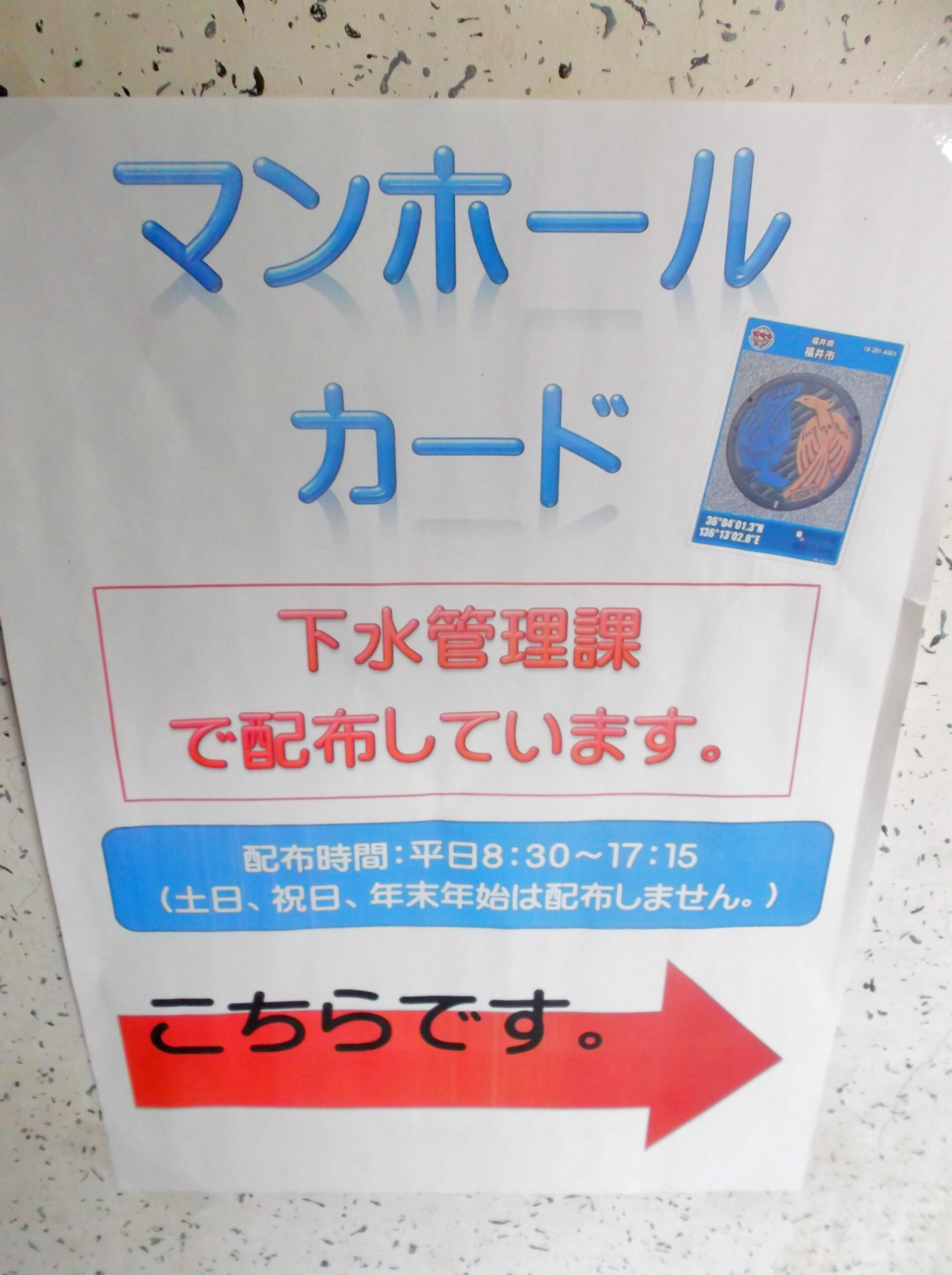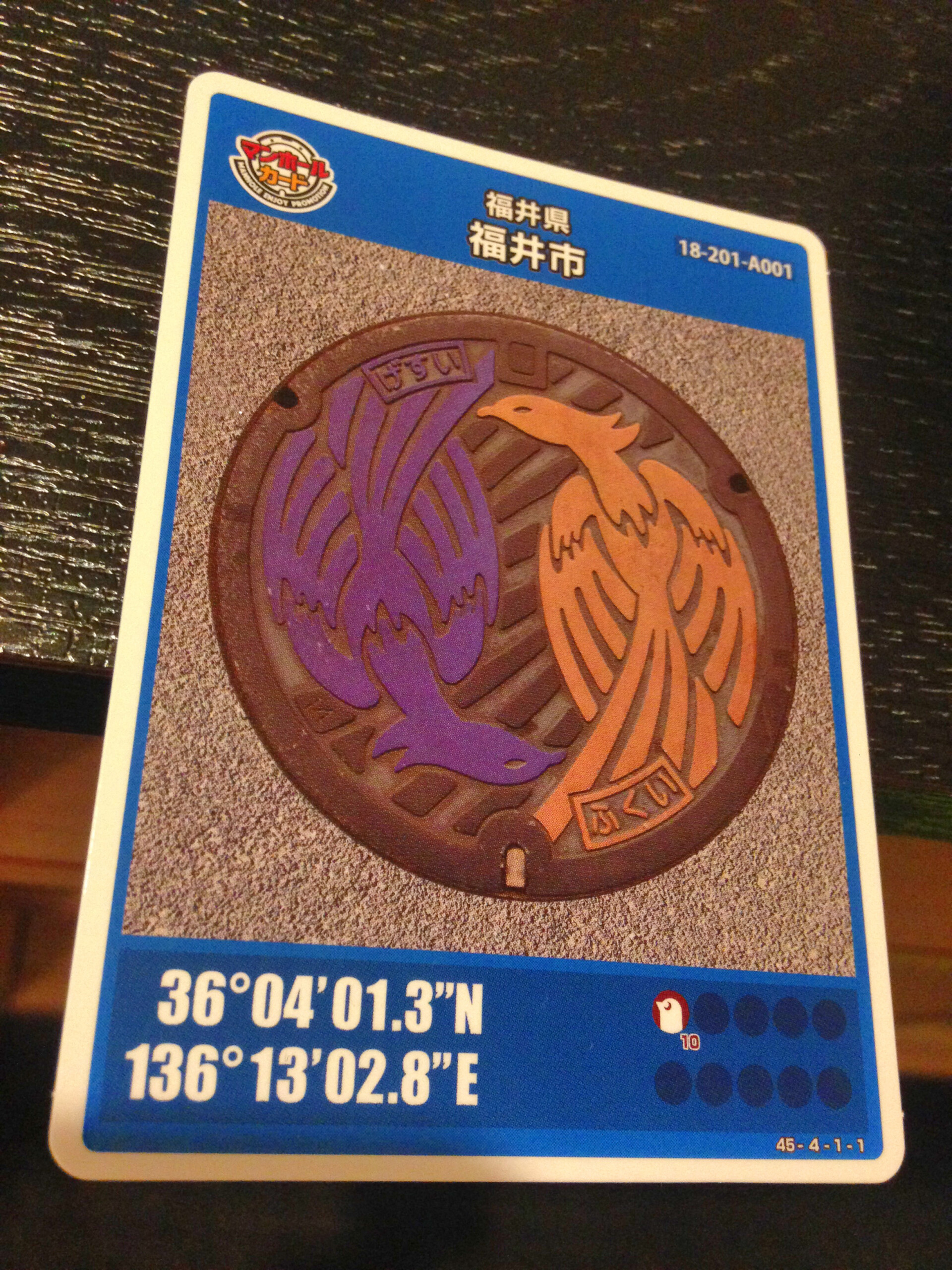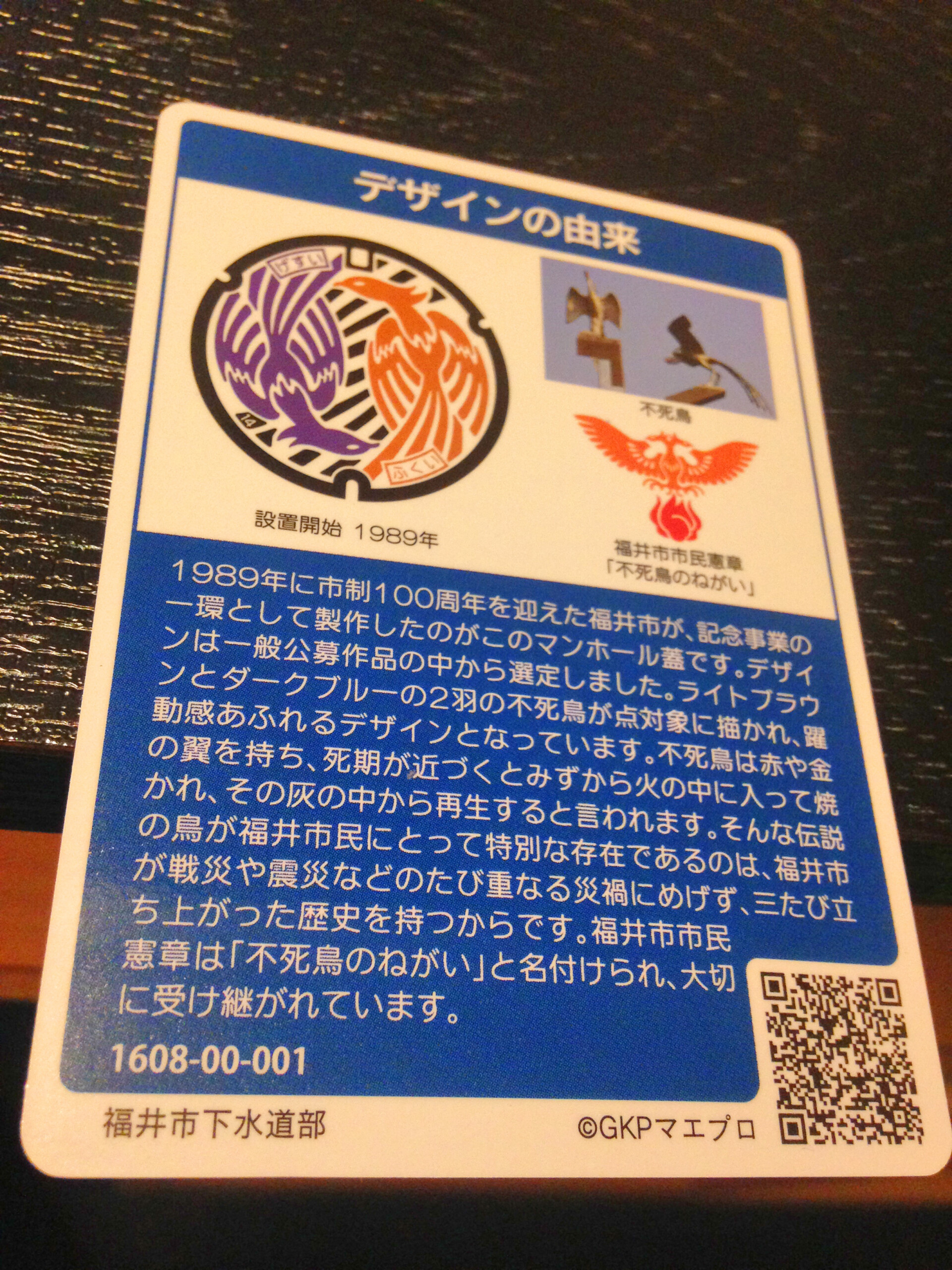Japan might be the ultimate country for hobbyists. It’s a place where the brilliant train system attracts photographers amateur and densha otaku alike, limited-edition Kit Kats are misnomers, and vending machines sell everything from raw fish to bouquets. Yet, perhaps the most unusual things to come out of Japan in the last decade are sewer cover trading cards.
Huh???

The first manhole cover designs were introduced in 1986; they proved popular enough for the ideas to spread to other districts, towns, and cities. (link in Japanese) On 1 April 2016, the 下水報道プラットホーム, or Sewer PR Platform, decided to capitalize on appeal of these unusual artworks to release the first set of limited edition sewer cover trading cards. (link in Japanese)
Roughly every quarter since then, a new batch has been introduced, showcasing manhole cover art from each of Japan’s 47 prefectures. To get them, it might be as simple as going to a visitor information center next to a train station, or more awkwardly by paying a visit to a city/town hall or sewage treatment information center. Whatever it is, the cards are free, and you’re limited to one per visit. Oddly enough, some English versions of the cards also exist.

Having first noticed these sewer covers a number of years back, I just wish that these were printed way back then, if for no other reason than to learn the history to the designs.
More about the card itself– the front of a card shows a colorized sewer cover and city coordinates (and some type of card collection legend in the lower right). The back includes a description of the art, as well as when the design was first executed:

After checking the Sewer PR Platform website, I decided to obtain one of these sewer cards, in Fukui, the eponymous prefectural capital of Fukui prefecture.

Fukui is best known for dinosaur fossil discoveries; they’ve even got a dinosaur museum in Katsuyama city, east of the prefectural capital. However, with Fukui suffering from the double whammy of earthquakes and air raids, the city government adopted the 不死鳥 (ふしちょう・fushichou), or phoenix, as its symbol. It’s no coincidence that the word more literally translates as “no death bird.” Although plenty of other Japanese cities could join them in choosing the phoenix for the same reasons, the card goes on to note that the phoenix was selected in 1989, to celebrate the centennial of the establishment of Fukui as a city.
If you’re a Japanophile and keen to learn more about its history and pop culture, you’ll probably want to grab a couple of these sewer cover cards … they’re a great story when passing through immigration.

A Big Thank You! Psychologyorg